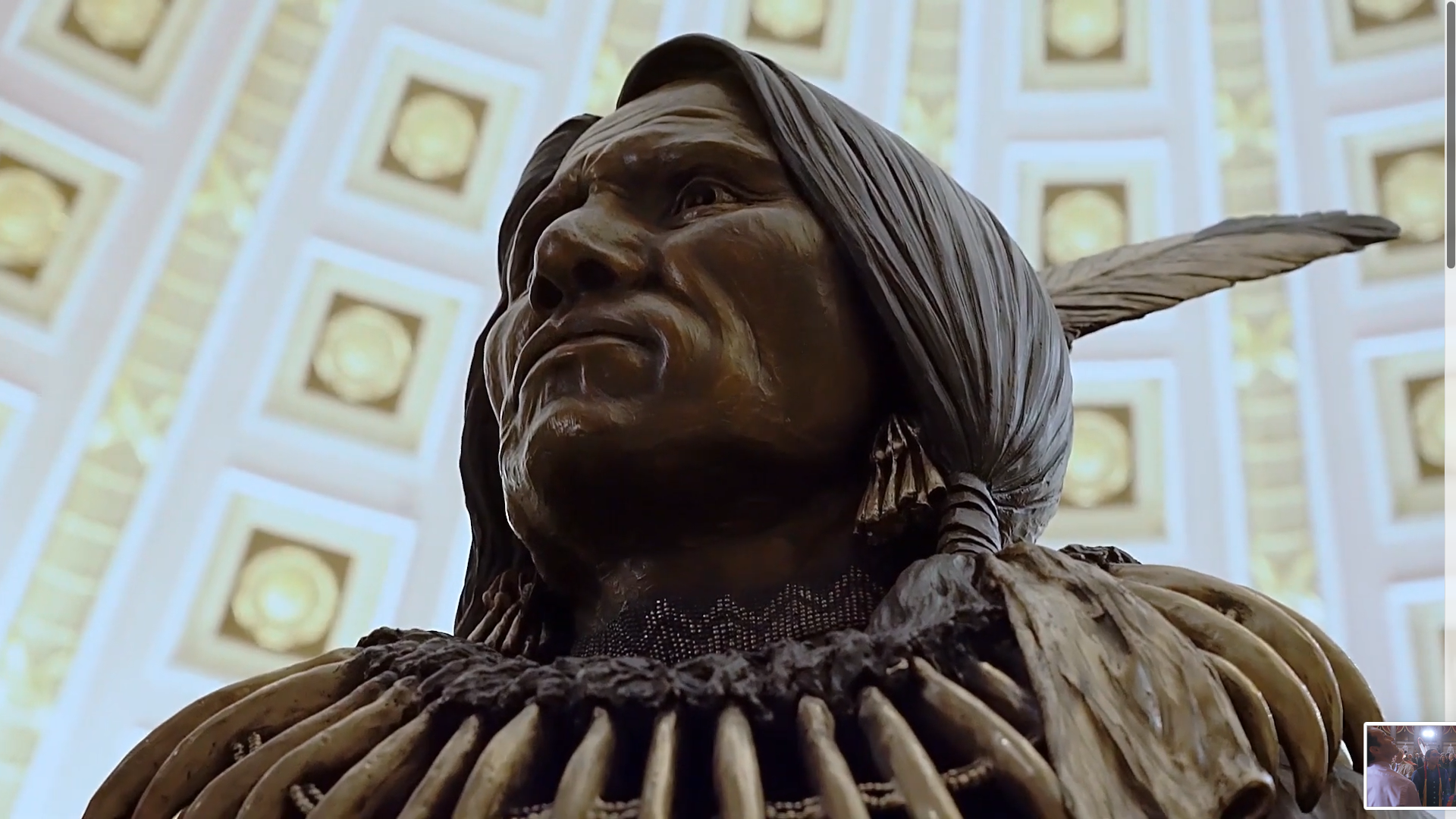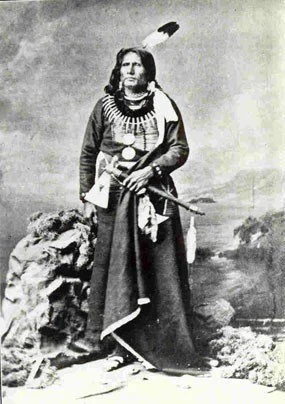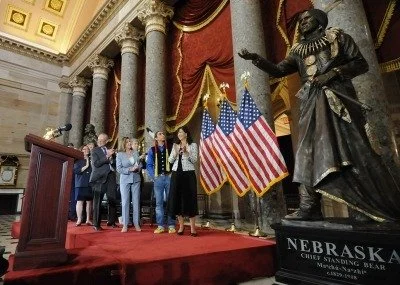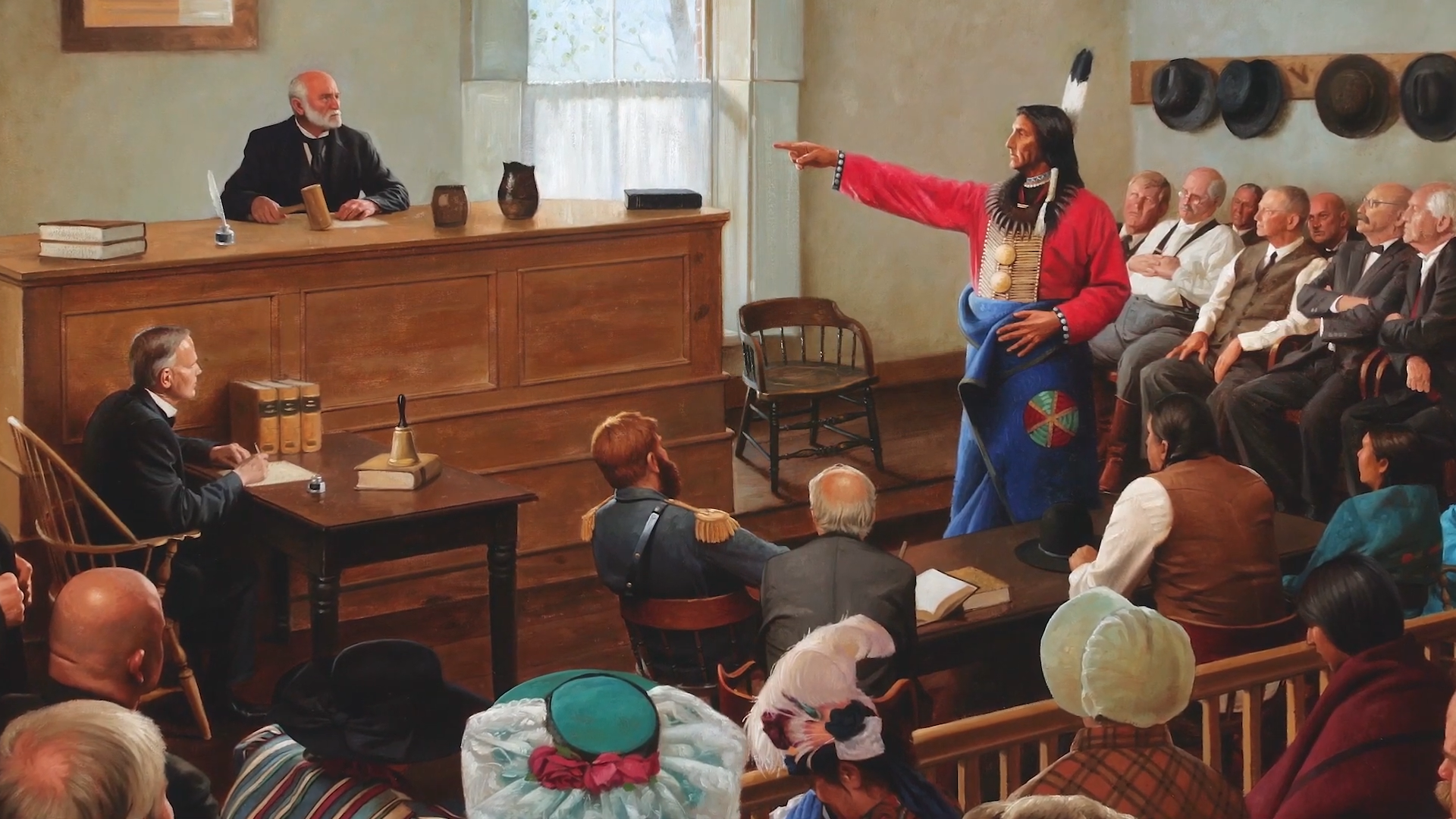
Chief Standing Bear’s Journey to Statuary Hall
A film by Judi gaiashkibos and Ingrid Holmquist
Scroll ↓
Ponca Chief Standing Bear (Manchú-Nanzhín) stood before a courtroom in 1879 with his hand outstretched, reaching toward the judge. "That hand is not the color of yours, but if I prick it, blood will flow and I shall feel pain. The blood is of the same color as yours. God made me and I am a man."
The judge issued his ruling soon after, establishing that Native Americans are "persons" under the law and are entitled to the same rights as anyone else in the nation.
The history that led Chief Standing Bear to this moment was one of forced relocation, perseverance, and a sacred promise. Starvation and disease claimed the lives of almost a third of the Ponca tribe during what's known as the Ponca Trail of Tears. Among them, was Chief Standing Bear's eldest son, Bear Shield. On his deathbed, he asked his father for one thing: he wanted to be buried among his ancestors along the Niobrara River. Chief Standing Bear made that promise. He defied the government's orders and journeyed back to his home with the body of his deceased child. In the process, Chief Standing Bear and several dozen other Ponca people who defied the government's orders were arrested and detained in Fort Omaha.
Protesting his detention, Chief Standing Bear argued that he and his tribe had a right to return back to their homeland in present-day northeast Nebraska. The government responded that Standing Bear and the other Ponca people had no right to sue because "an Indian was not a person under the meaning of the law." It's here, in 1879, that Chief Standing Bear's words in the courtroom would echo for generations to come. He went on to advocate for the rights of Indigenous people, traveling the country to speak to people about the court case and Indigenous life.
His story and legacy continue in the work and words of his descendants and through a statue that now stands in Statuary Hall in the United States Capitol.
Credits:
Commissioned by: Nebraska Commission on Indian Affairs
Directors: Judi gaiashkibos and Ingrid Holmquist
Executive Producer: Judi gaiashkibos
Producer: Ingrid Holmquist
Consulting Producer: Scott Shafer
Editor: Ingrid Holmquist
Animation: Lauren Gregory, Blake Brown
Illustration: Michael Wimmer
Videography: Shaandiin Tome, Brian Fimbres, James Pace-Cornsilk, Patrick Aylward, Andy Lawless, Gabriella Parsons, Austin Blankenau, Dan Nelson, Caterina Barbera, David Stephens
Additional Editing: Shaandiin Tome, Brian Fimbres
Color Correction: Austin Blankenau
Sound Recording: Ronald Young Jr., Simon Pattee
Original Music, Sound Design and Mix: Ignacio Bonet



